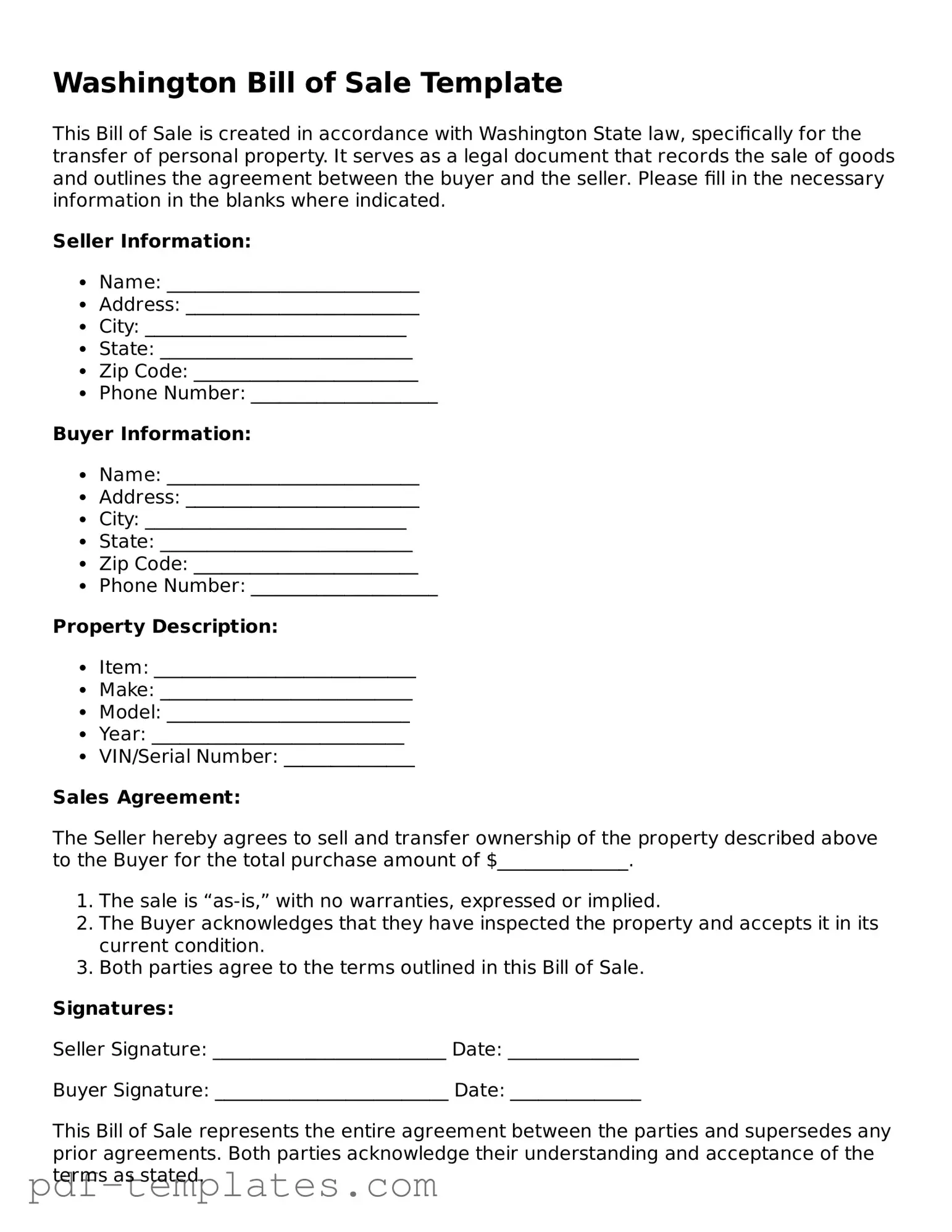The Washington Bill of Sale is similar to a Vehicle Title Transfer form. Both documents serve to transfer ownership from one party to another, particularly for vehicles. When a seller sells a vehicle, they must complete the Vehicle Title Transfer form to officially change the title into the buyer's name. This ensures that the buyer is recognized as the new owner and can register the vehicle with the state.
Another document that resembles the Bill of Sale is the Lease Agreement. While a Bill of Sale is used for the transfer of ownership, a Lease Agreement outlines the terms under which one party rents property from another. Both documents require signatures from both parties to be legally binding, ensuring that all terms are agreed upon and acknowledged.
A Purchase Agreement is also similar to the Bill of Sale. This document details the terms of a sale, including the price and conditions of the transaction. While a Bill of Sale serves as proof of ownership transfer, a Purchase Agreement outlines the entire process leading up to that transfer, making it essential for larger transactions, such as real estate.
The Affidavit of Ownership is another document that shares similarities with the Bill of Sale. This affidavit is often used when the owner cannot provide a title for the property being sold. It serves as a sworn statement confirming that the seller is indeed the rightful owner, which can help facilitate the sale in the absence of a formal title.
A Gift Deed is also comparable to the Bill of Sale, especially when ownership is transferred without monetary exchange. Both documents are used to establish the transfer of property, but a Gift Deed specifically indicates that the transfer is a gift. This can be important for tax purposes and to clarify the intentions of the parties involved.
The Warranty Deed is another document that has a similar purpose. It transfers ownership of real property and provides a guarantee that the seller holds clear title to the property. While a Bill of Sale typically applies to personal property, a Warranty Deed is used for real estate transactions, ensuring that the buyer receives full ownership rights.
Lastly, a Quitclaim Deed is similar to the Bill of Sale in that it transfers interest in property but does not guarantee that the title is clear. This document is often used in situations where the transfer is between family members or in divorce settlements. Like the Bill of Sale, it formalizes the transfer of ownership, but it does so with less assurance regarding the property's title status.
